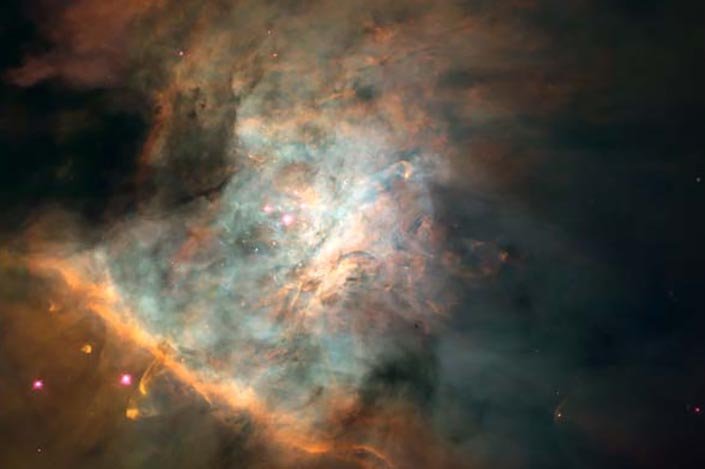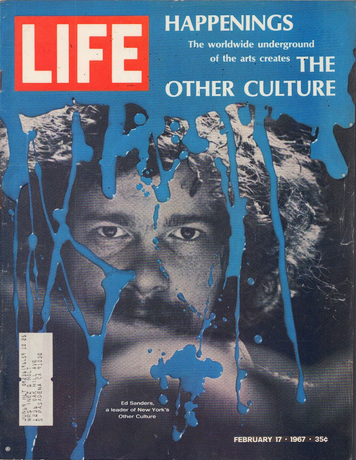The Power of Awe and the Cosmos
NASA’s James Webb Space Telescope has been able to show new, finer details of the galaxy group, Stephan’s Quintet. The rendering here was created from nearly 1,000 separate image files. (Image credit: NASA, ESA, CSA, STScI)
A cosmologist, cultural historian, and neurosurgeon discuss how outer space and otherworldly phenomena can inspire discovery across disciplines and bring people together.
By Melissa DeWitte, Stanford News
The essay was first published in the Stanford News, September 6, 2022. We are reprinting a version edited for length and Stanford University centric content, but without altering the themes of philosophy, science, and art. The article also reveals the little-known manipulation of stellar images to improve aesthetics and perception, with comparison to renderings of 19th century landscape artists. – C. Munkholm
The images to emerge from the James Webb Space Telescope have captured details of the cosmos never seen before, leaving the scientific community and public alike in a state of awe. Even Stanford cosmologist Zeeshan Ahmed, for whom such images are commonplace, admitted: “You can’t contain it in your head. I think this is true for everybody – I mean, scientists are human still.”
“Awe is sort of this ineffable sense of transcendence,” said Stanford neurosurgeon and compassion scholar James Doty and “In some ways, you melt into it.”
Scholars across disciplines have long sought to understand the stirring – soul searching, even – emotions the universe evokes. Some have described a shakiness they call cosmic vertigo. Others have used the term cosmic insignificance when confronted with one’s littleness in a limitless universe. A few have found dwelling too long on such thoughts to be anxiety-inducing, an experience they label “neuroexistentialism”.
Doty, who is also the founder and director of the Stanford Center for Compassion and Altruism Research, of which His Holiness the Dalai Lama is the founding benefactor, awe’s power lies in its ability to make us feel connected to something much larger than ourselves.
“At the end of the day, we are all one, not only with each other but with every living being and in fact, with the universe,” Doty said.
The transcendent experience of self-realization and oneness is also the basis of many religions, Doty points out. For example, in Buddhism, there is a deep desire to attain enlightenment, which ultimately is about merging oneself with the universe.
Designed to inspire
Elizabeth Kessler, art historian, examines the parallels between art and philosophy and astronomical images in her book, Picturing the Cosmos: Hubble Space Telescope Images and the Astronomical Sublime (University of Minnesota Press, 2012), and describes how astronomical images are crafted in a way to represent scientific data and evoke an aesthetic response.
As Kessler learned in her interviews with the NASA team that produced images for the Hubble Heritage Project, they wanted to circulate imagery that would inspire the public, not just please individuals working in science and technology. She learned that every astronomical image, like any representation, involves aesthetic decisions about how to depict the celestial phenomena captured by the telescope in a way that won’t feel strange to audiences.
“Astronomers and image processors carefully balance the need for a scientifically valid image with the desire for an aesthetically compelling one,” said Kessler.
Because telescopes collect data too faint for our eyes to see and beyond the visible light spectrum (JWST primarily in infrared light, Hubble in visible and ultraviolet) their images are assigned colors for viewers to better comprehend the detected forms.
Every color picture from JWST, for example, is a composite of at least three different monochrome images, each one collected using a filter that captures a different wavelength of infrared light. Exposures can last hours or even days. Each filter is then assigned a different color, which is combined into the final images that get circulated.
While any color can be mapped onto any wavelength, astronomers believe some color combinations work better than others. For example, in the Hubble Heritage Project’s early rendition of the planetary nebula NGC 3132, the team experimented with an unconventional color scheme of pinks and yellows. But the result “didn’t feel right,” said astronomer Keith Noll in an interview with Kessler, so they used colors less strange and more typical of terrestrial worlds.
Because the development of astronomical images involves many such artistic choices, Kessler likens the process to 19th-century landscape paintings and photographs of the American West, where light, shadows, and colors were used in ways to conjure the sublime that Kant wrote so prolifically about.
At first, the Hubble Heritage Project experimented with an unconventional color scheme of the "Southern Ring" Nebula but in the end, the final version looked more Earth-like than its early rendition and as the team pointed out, closely resembled a world “completely different”: the vivid aqua-colored algae of Yellowstone’s Grand Prismatic Spring. (Image credit: Hubble Space Telescope)
Many of the same aesthetic traditions, from the use of dramatic light, shadows, color, and composition that painters Thomas Moran (pictured) and Albert Bierstadt used to evoke the sublime are followed in astronomical image, Elizabeth Kessler said in her book, Picturing the Cosmos: Hubble Space Telescope Images and the Astronomical Sublime. (Image credit: Thomas Moran (1837-1926), 1873-1874)
Orion Nebula mosaic. (Image credit: NASA, C.R. O’Dell, and S.K. Wong (Rice University))
Understanding the incomprehensible
Considering how one light year – the distance that light can cover in a year – is equivalent to 6 trillion miles and astronomers are observing stars billions of years from earth, the vastness is almost incomprehensible. Nevertheless, it is calculable. NASA has tried to quantify it in a variety of ways; recently, they described Webb’s First Deep Field – which is 4.6 billion light years away – as “approximately the size of a grain of sand held at arm’s length, a tiny sliver of the vast universe.”
Cosmic figures – whether it is the distance from Earth or the number of stars in the universe – are “unfathomable,” said Ahmed, a lead scientist at SLAC National Accelerator Laboratory and a senior member at Kavli Institute for Particle Astrophysics and Cosmology, and who studies the cosmic microwave background, which is the afterglow of the big bang. He described how early in his career, his perception of the universe evolved to be more of a mathematical problem to solve, rather than a philosophical one.
Ahmed has been reading with his four-year-old preschooler the children’s book, a Hundred Billion Trillion Stars, which puts numbers into scale. “It was funny going through that book because it’s all about introducing young children to large quantities and numbers, like seven billion human beings weigh about as much as 10 quadrillion ants,” he said.
Before reading the book, Ahmed said his son thought 100, an amount he could conceptualize, was a large number. Now, a billion is big. Ahmed remembers feeling that same child-like astonishment when he first saw the Hubble images. “The thing that blew my mind was realizing that every object in the first Hubble Deep Field pictures was not a star – it was a galaxy,” Ahmed said.
For the neurosurgeon Doty, the power of awe works in both directions. Just as the vastness of the universe can stir curiosity, so can the infinitesimal. For example, contemplating the number of atoms in the universe can “make you wonder how all of this is possible,” he said.
For some, there is a certain amount of terror in the unknown, both Doty and Kessler acknowledged. The philosopher Edmund Burke, for example, found the ideas of infinity and eternity exciting and terrifying.
To decrease that anxiety and fear, the mind establishes a narrative, Doty said. “Trying to explain the unexplainable gives you comfort,” he said.
Kessler argues that in many ways, astronomical images that evoke the sublime are another way to calm and contain those fears. “You’re not asked to get lost in the infinite but to reflect on the vastness of the universe and our place within it,” she said. “These images might remind us of our relative insignificance, but also our potential to come to know and understand what lies beyond us and our world.”
As Kessler emphasized, “this is a kind of vision that’s only possible through a collaboration between humans and technology.”
“We arise from stardust, and we return to stardust,” said Doty. “That cyclical connection and reality that we are all part of whatever exactly ‘this is’ makes us feel, in some ways, special while also feeling insignificant.”


















